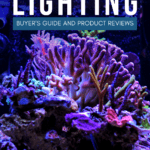Saltwater reef tanks are the gems of the aquarium world. There’s nothing that compares nurturing a tank of corals into a thriving reef habitat. But growing these challenging invertebrates comes with a steep learning curve. Investing in the best reef LED lighting can help your corals thrive!
This guide to reef tanks aims to acquaint you with the basic scientific principles behind aquarium lights and how they impact the growth of live rocks and corals. It includes detailed product reviews to some of the best LED reef lights on the market!
Quick Comparisons of the 6 Best Reef LED Lightings
| IMAGE | BRAND | DETAILS | |
|---|---|---|---|
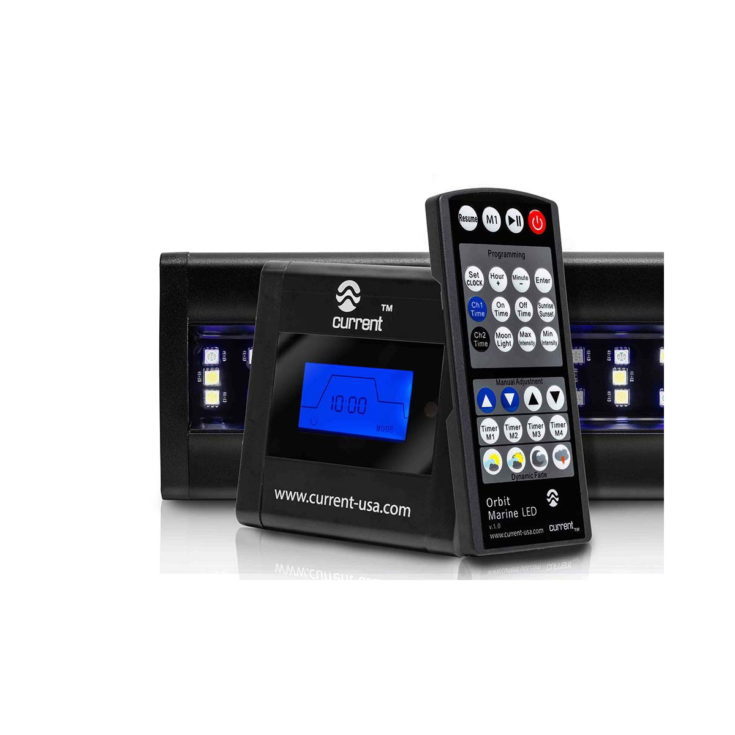 | Current USA Orbit Marine Aquarium LED Light |
| View Product |
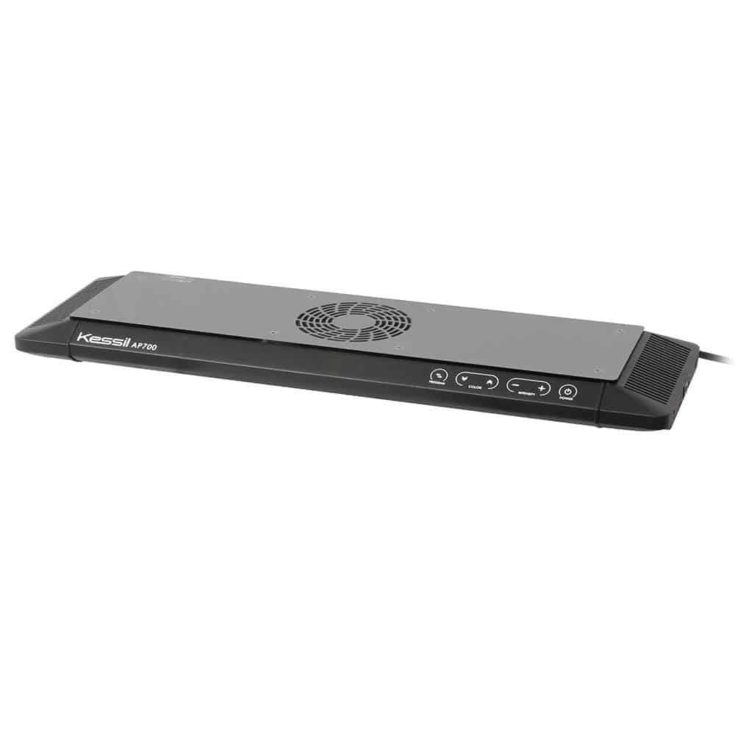 | Kessil AP700 LED Aquarium Light |
| View Product |
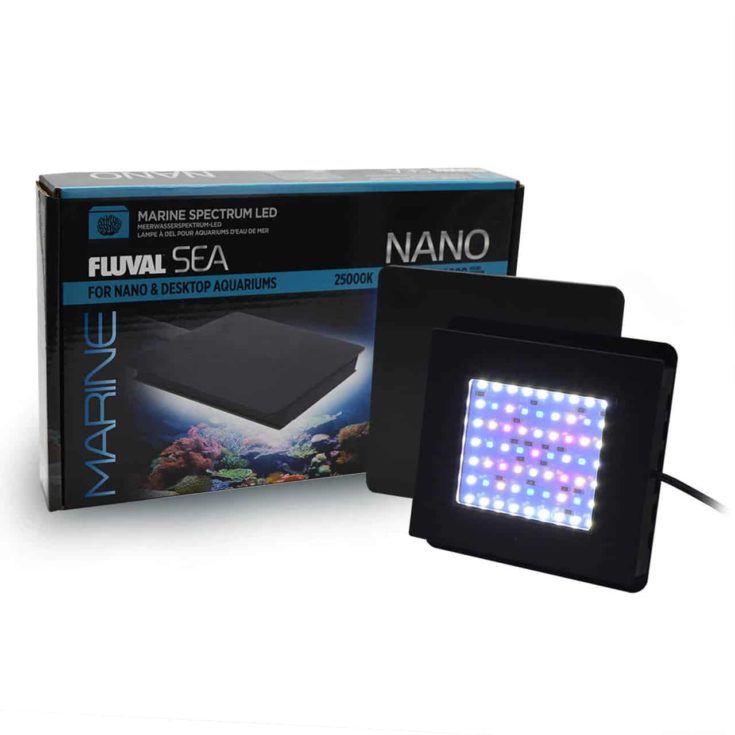 | Fluval Sea Marine Nano LED Light |
| View Product |
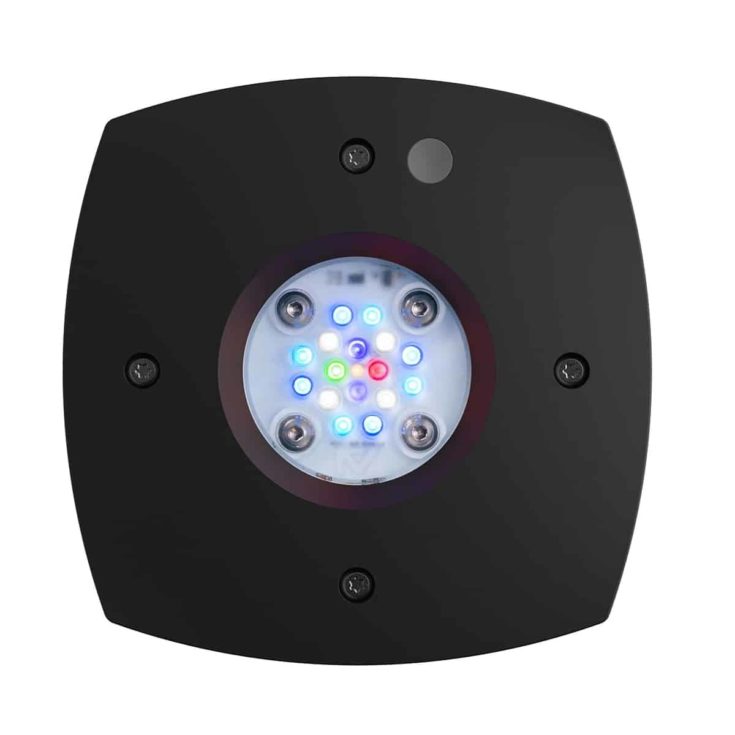 | Aqua Illumination Prime 16 HD Aquarium LED |
| View Product |
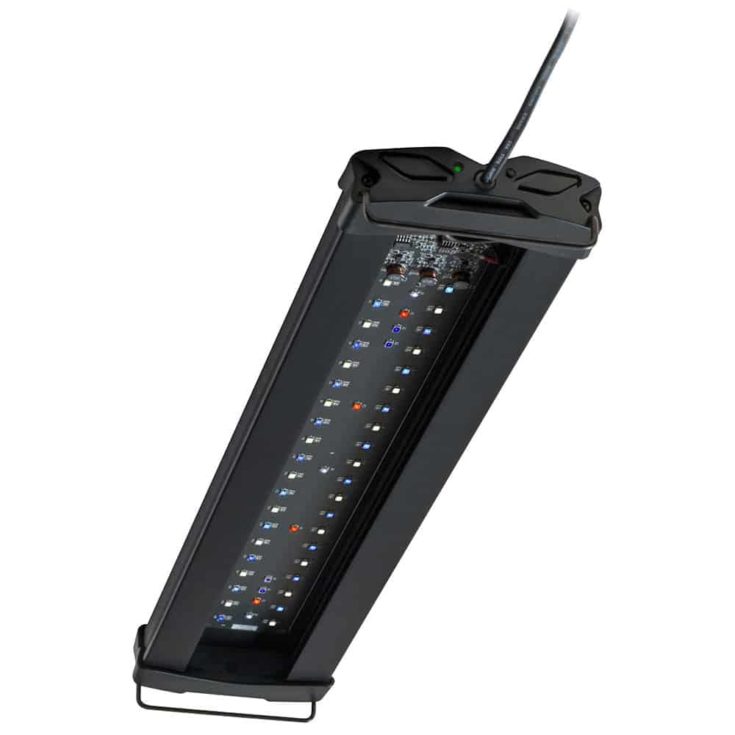 | Aquatic Life Edge Marine WiFi Controllable LED Light Fixture |
| View Product |
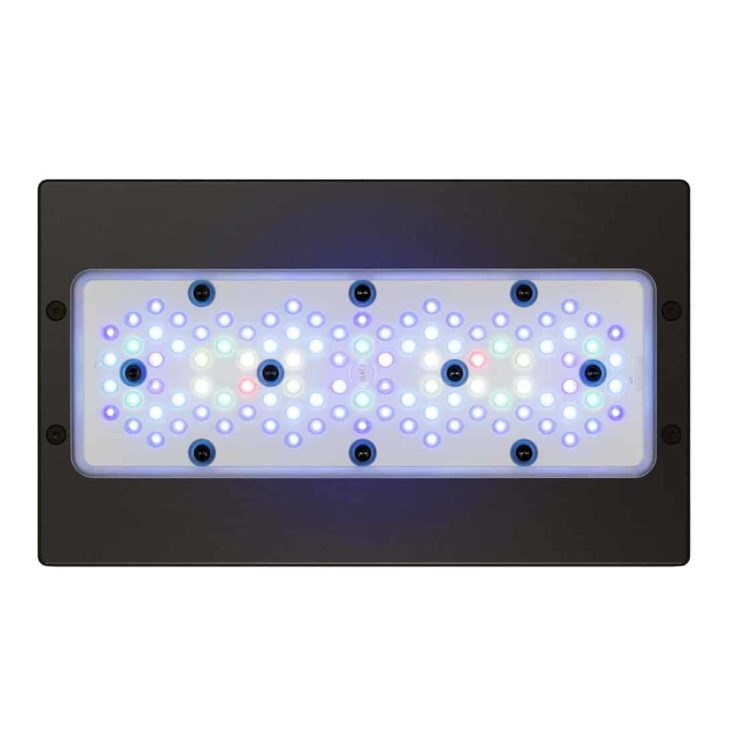 | EcoTech Marine Radion XR30 G5 Blue LED Light Fixture |
| View Product |
Reef Lighting 101–What is a Reef Tank?
Choosing the right light fixture for your reef tank can be a daunting proposition. While picking out a light for a fish-only saltwater aquarium is a straightforward process, raising live rocks, sponges and corals requires more targeted lighting conditions. These reef tanks have the highest lighting requirements in the aquarium trade.
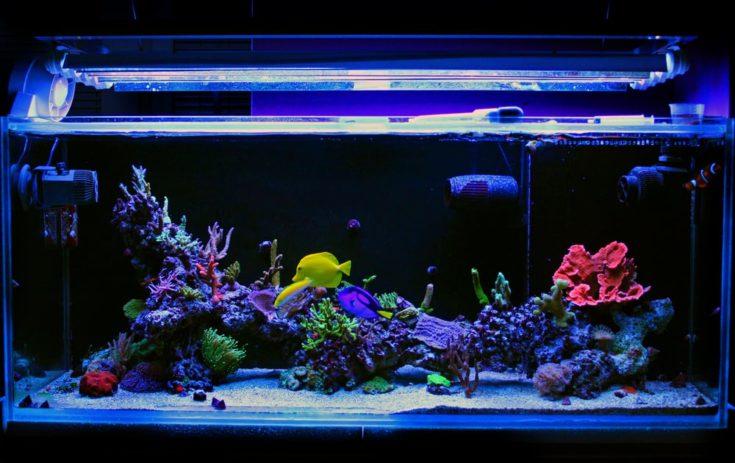
Light-emitting diodes, known as LEDs, have become a very popular option for aquariums of all types and sizes and are especially useful for coral lighting. LED aquarium lights were once something you had to build DIY-style but these days there are many affordable off-the-shelf options to choose from.
Lighting Challenges in a Reef Aquarium
One challenge with maintaining a reef tank is that the different occupants need different lighting conditions to thrive. Their placement in the tank matters too. Live rocks and corals placed near the top of your tank will naturally receive more intense lighting conditions than those near the bottom.
Moreover, the size and depth of your tank and the clarity of your water will directly impact the amount of light your corals receive. You’ll ideally need an LED fixture that’s adjustable so you can direct the appropriate amount of light to every part of your tank.
Spectrum and Intensity of Aquarium Lights
Light is a complicated topic, but for reef aquariums you’re mostly interested in the spectrum and intensity of light your fixture provides to the occupants of your tank.
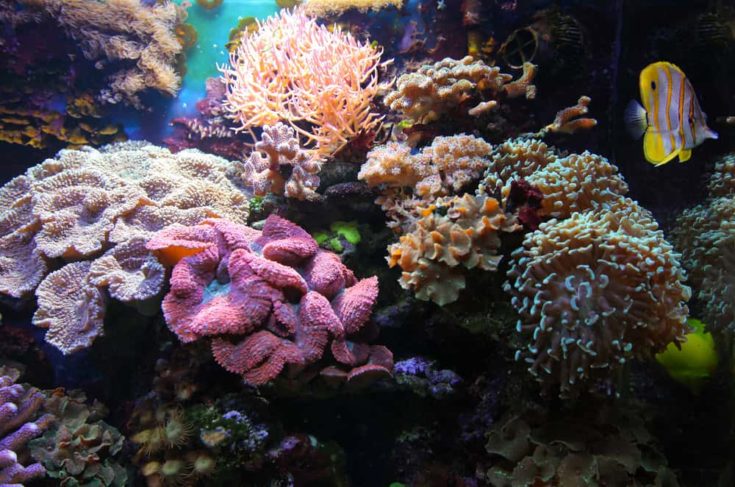
I could write an entire article on each of these topics, but I’ll try to keep it simple.
All Light is Not Equal in Your Aquarium
If you remember back to your high school science classes you may remember that visible light exists on a spectrum from about 400 to 700 nanometers (nm) between wavelengths. The color blue is right near 400 nm while red is about 700 nm, and the infrared and ultraviolet spectrums are just outside the range human eyes can detect.
As light enters the water the longer wavelengths get filtered out while the shorter ones penetrate further. By the time you’ve reached 30 feet underwater, the red and yellow spectrums are mostly eliminated and blue light dominates. You’ll want to keep in mind the natural depth of your coral species so you can replicate their lighting.
Another challenge with aquarium lights is that blue-dominate tank lighting does not look very natural. When choosing your LED set-up you’ll want the appropriate mix of warmer and cooler spectrum diodes so you can mimic your coral’s natural conditions while still making your tank look nice to the human eye.
What is PAR or Photosynthetically Active Radiation?
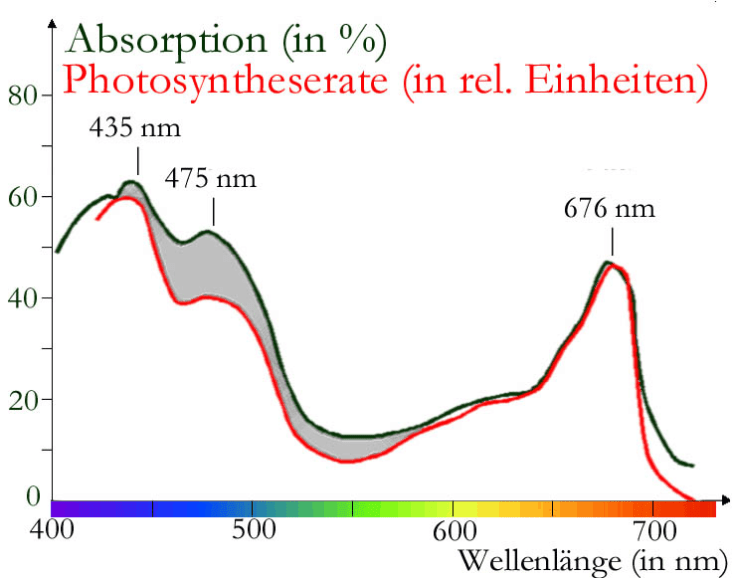
PAR is a measurement that calculates the amount of light in the water available to photosynthetic organisms like corals and live plants. Photosynthesis happens when the lightwaves are between 400 and 700nm. But this measurement doesn’t tell the full story, because all wavelengths are not equally photosynthetic.
Plants and live coral increase photosynthesis when the light spectrum is in the red or blue ranges and decreases greatly when green light dominates (around 560 nm). Since PAR measures all light and not just the wavelengths that initiate photosynthesis you’ll need more information to pick the best option for your tank.
A light fixture can have a high PAR rating and yet still be inadequate for raising corals. You’ll need to look at the light manufacturer’s spectrograph to see the range of wavelengths each diode produces at different depths. This will tell you how much PUR or Photosynthetic Usable Radiation a fixture can provide.
Measuring and Using PAR Numbers
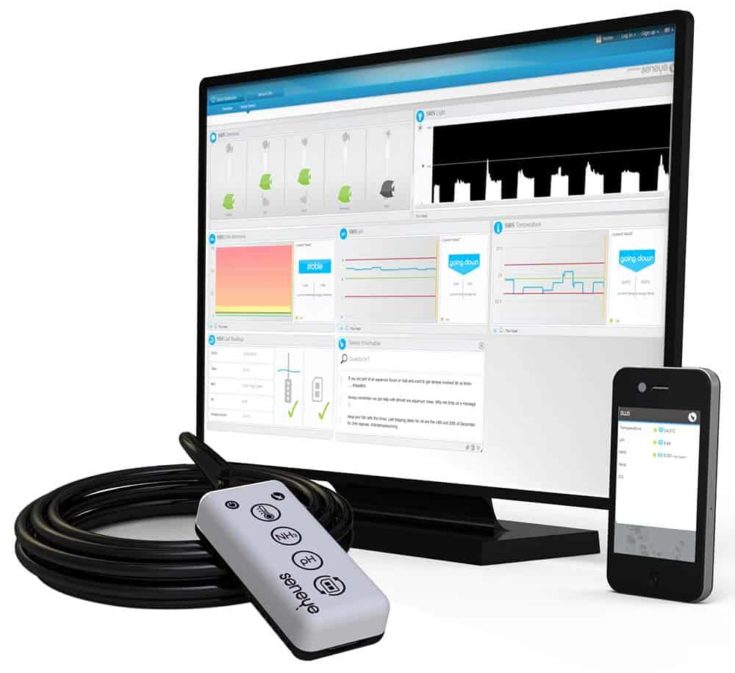
The best way to determine how much light your corals are receiving from your LED light is to measure it with a PAR meter. You can often buy or rent these devices from aquarium shops and use them to take direct measurements in your tank. Another option is to use a reef monitoring system to track your PAR over time.
PAR meters and monitoring systems can be pricey but they are a great way to protect your aquarium (aka investment). Spending a couple of hundred bucks can be worth it when you consider how much it costs to start a reef tank! This great video from Marine Depot breaks down PAR and demonstrates how to measure it.
Kelvins, Watts and Other Ways of Measuring Light
You may notice that older books and articles on aquarium lights go into a lot of detail on the K-ratings (Kelvins) of light fixtures and the wattage of the various types of bulbs. But these aren’t terribly helpful for choosing an LED fixture for a reef tank.
- Wattage simply tells you how much energy a fixture uses, not the amount or spectrum of light it produces.
- LED aquarium lights have the capacity to hold many different diodes, so you’re not limited to the energy produced by a single light bulb or set of bulbs.
- The K-rating for the fixture is less important than the type and intensity of light each diode produces.
Unlike the classic fluorescent aquarium light, LEDs can produce full spectrum light for your tank and still use mostly cool or blue-dominant diodes. The K-rating really isn’t relevant, and the actual amount of energy the fixture uses will depend on your settings. Look for the PAR rating for the fixture instead.
Buyer’s Guide to LED Reef Lights
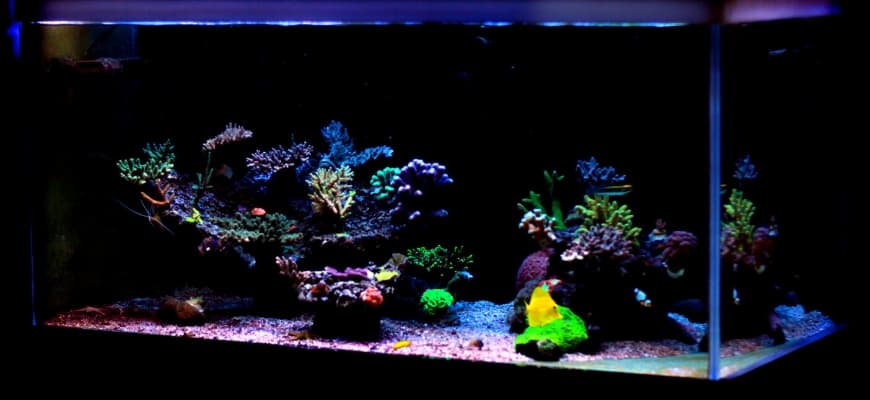
Choosing a lighting system for your reef tank can be a challenge, so I put together this brief guide to help you identify which functions and features are most useful for your tank. You can learn more about the best LED aquarium lights here.
Benefits of LED Reef Lights
There are several reasons LEDs have become so popular for aquariums and especially reef tanks! In the old days, controlling your lights required multiple fixtures, timers and power strips. These huge bulbs devoured energy and often caused tank temperatures to spike to dangerous levels. LEDs solve a lot of these problems.
Appearance and Size of LED Light Fixtures
LEDs are usually attractive and compact fixtures that produce a lot of light from a small package. Unlike traditional aquarium lights, you won’t have to cover the entire hood of your tank with bulbs to highlight your corals. The lenses on the diodes direct the light with precision so less is lost to the surrounding area.
Safety and Low Heat Output
LED aquarium lights are safer by far than the older types. Most fixtures are at least somewhat waterproof and some can even be submerged without causing an electrical short or fire.
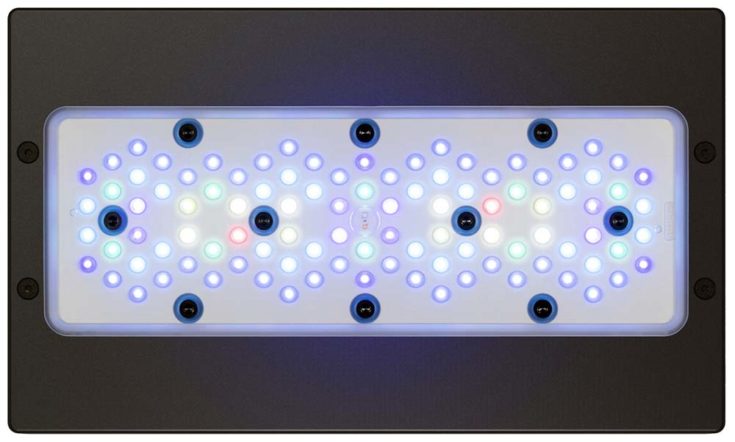
They also generate a lot less heat than other types of lighting. You won’t have to worry about overheating your tank when you use LEDs, and they don’t require as many extra timers, fans and cords to be fully functional. Oftentimes you’ll only need to use a single outlet or plug on a power strip to operate your lights.
Energy Efficiency
High-quality LEDs are very energy efficient and have lower operating costs than the other styles of aquarium lighting. An LED bulb may last for up to 10 years before needing replacement as well. Your overall efficiency will depend on the quality of the components, however. Cheap reef lights may not be as efficient as premium models.
Excellent Control—Easily Balance Coral and Marine Animal Needs
The best thing about LED reef lights is that they offer unparalleled control, above and beyond what you can expect from other types of fixtures. You can often simulate sunrises and sunsets, cloudy and stormy conditions, and some even have built-in moon lights for nighttime viewing. All in one fixture!
This allows you to maximize your coral growth even with only 8 to 10 hours a day of direct lighting and still highlight the beautiful colors on your reef fish.
| Advantages | Disadvantages |
|
|
|
|
|
|
|
Choosing a LED Reef Light for Your Tank
When searching for an LED system for your tank, consider the following factors:
Build and Component Quality
While it may be tempting to save money and go with a cheap light, you might not be happy with the result. While many reef lights advertise the quality of their diodes, if the other internal components are badly manufactured your system won’t produce as much light as you expect.
You’ll also want to consider the construction quality of the housing, cords, channels and any other parts in your unit as well. If you opt for a cheap unit the diodes may last for 10 years, but that won’t do you any good if the rest of the unit requires replacement sooner than that.
Aesthetics
Unlike the other options such as fluorescent, compact fluorescent and metal halide lights, LED lights for reef tanks don’t always come in a strip that lay across the top of your tank. Some LEDs are strip lights but others may be round or square modules.
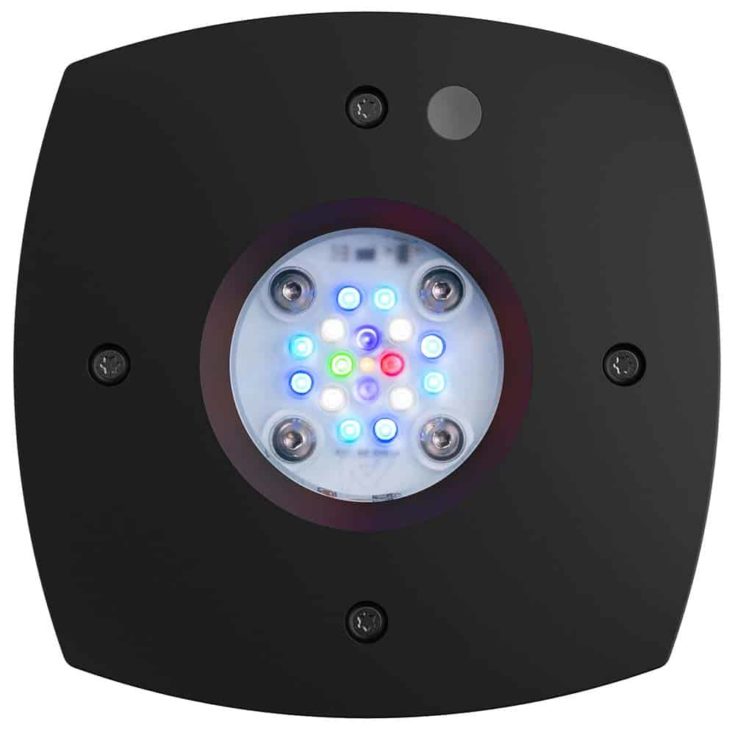
Many LED reef lights are very attractive, compact units that attach to the sides of your tank with brackets, so you can adjust the height to the optimal level. Most aftermarket LED lights need to be hung over your aquarium in some fashion. This keeps your tank accessible too.
Control
My favorite thing about LED lights for reef and planted tanks is the amount of control they offer! Simulate a slow-rising sun over your reef or program in a stormy day or starlit night.
Multiple Color Channels
Most LED systems allow you to control the intensity of individual diodes or groups of diodes. This means you can create the exact effect you’re looking for in every part of your tank! You can kick up the full spectrum diodes to show off your fish and then raise up the actinic blue diodes to feed your corals.
Programmable Through Apps and WiFi
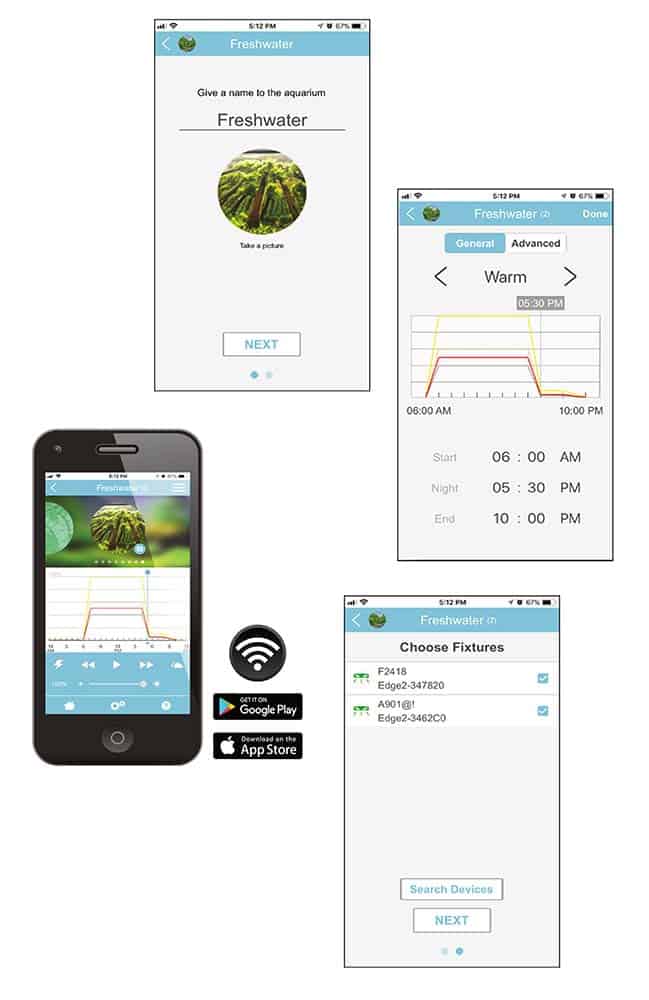
I mentioned the older styles of lighting above. There was a time when the only thing you could control was whether your lights were on or off, but with LED lights you can program intricate and extended sequences. Most units either come with a remote control or allow you to do this on your phone or tablet with a WiFi-enabled app.
Brand
There are several brands that are well known in the LED aquarium market, and it may be best to go with one of these recognized brands over an unknown. That way you know you’ll have access to replacement parts and assistance if you run into problems.
Features to Look For in LED Reef Lights
So what features should you specifically look for as you shop for your LED reef lights? I’d advise you to consider units that:
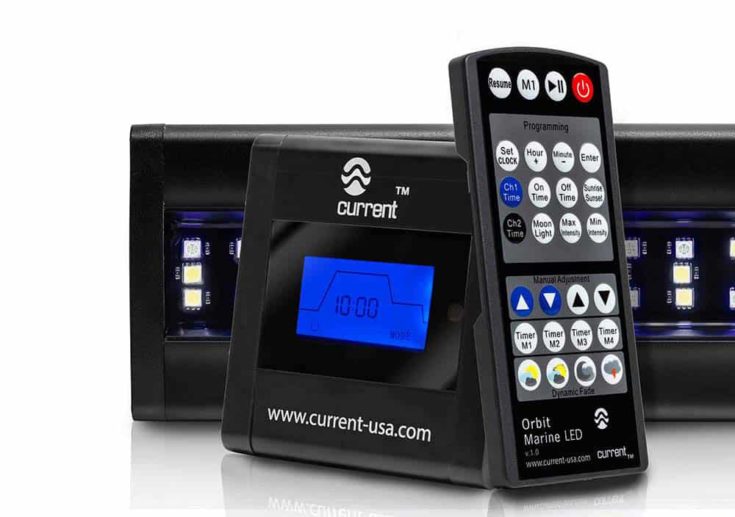
- Are easy to install on your tank
- Are easy to set-up and program through remote control or WiFi-enabled apps and include presets for different lighting conditions
- Can demonstrate their energy efficiency as proof of internal component quality
- Are adjustable and offer flexibility, so you don’t have to buy a new system if you modify your reef’s design
- Are durable and have easily-sourced replacement parts
Light Requirements for Different Corals
Corals are tiny living creatures (polyps) that live in clusters and secrete a calcium carbonate shell. Within the structure live a type of photosynthetic organism called zooxanthellae. These microorganisms feed the coral polyp and give the coral it’s color. Some corals also feed directly on plankton or algae in your water too.
There are two primary types of corals: hard and soft. Soft types like Mushroom and Leather corals are usually considered easier to maintain and require less intense light than the hard SPS/LPS (small polyp stony/large polyp stony) varieties. But you’ll need to look up the light requirements of the specific varieties in your tank.
Generally speaking, the amount of light each type requires is:
| Type of Corals | Lighting Requirements |
| Soft Corals | 60 to 150 PAR |
| SPS Corals | 200 to 500 PAR |
| LPS Corals | approximately 150 to 300 PAR |
Top 6 LED Reef Lighting Reviews
As their popularity has skyrocketed many manufacturers have jumped on the LED bandwagon. While you can still DIY your own reef light, it’s never been easier to find a great all-in-one option. After intense research, these are the best nano reef lights for tanks under 29-gallons and most are also suitable for larger reef tanks as well.
1. Current USA Orbit Marine Aquarium LED Light

- Style: Striplight; Modular
- Number of LEDs: 72 (36 dual daylight/36 dual actinic)
- Number of Channels: 2
- Fits Tanks: 18 to 24 inches long
- Includes: Marine LED fixture, Ramp timer with Remote Control, 2 Adjustable Docking Mounts, Transformer with cord
- Dimensions: 16.8 x 3.5 x 0.44 inches
- Best for: Mixed Reef Tanks; Soft and LPS Corals
- Energy use: 18 Watts
- Programmable: Yes with Remote Control
- Mounting: Uses Brackets
- Other Versions Available: 24 to 36 inches, 36 to 48 inches, 40 to 60 inches
For smaller mixed reef and coral tanks this 24-hour programmable LED light from Current USA is a great option. This fixture features 72 LEDs and covers the full light spectrum. It’s preprogrammed with 2 light schedules and 2 coral acclimation programs and allows for up to 4 other programs to be saved.
You can easily adjust the 2 color channels with your remote control, or directly on the backlit digital display if you prefer. There’s even programs for creating weather effects like lightning or fading moonlight! The aluminum housing is durable and the mounting brackets are easily attached to most styles of aquarium.
| Pros | Cons |
|---|---|
|
|
2. Kessil AP700 LED Aquarium Light

- Style: Classic Canopy Striplight
- Number of LEDs: 2 Dense Matrix Hybrid Optics; Optical Modification Kits Available
- Number of Channels: Customizable via App
- Fits Tanks: 36 to 48 inches long
- Dimensions: 20 x 6.4 x 1.5 inches
- Includes: Kessil LED fixture, USB cable, power adapter, power cord
- Best For: All Corals and Mixed Reef Tanks
- Energy use: 185 Watts
- Programmable: Yes via WiFi App
- Mounting: Multiple Aftermarket Options
- Other Versions Available: No, use multiple units for larger tanks
If you’re looking for the best option in a premium fixture then the Kessil AP700 could be the LED for you. Featuring Kessil’s unique dense matrix hybrid optics, this light provides intense light across a broad spectrum but prevents “hot spots” from killing your corals. This light fixture is almost endlessly customizable!
Using the WiFi-enabled app you can mix and match your colors to provide the exact effect you want in your tank. It includes programs for weather effects and different types of moonlight too. It also automatically adjusts the UV light to maximum your coral growth without damaging them.
| Pros | Cons |
|---|---|
|
|
3. Fluval Sea Marine Nano LED Light

- Style: Square Box
- Fits Tanks: Flexible; Fits Various Sizes and Styles
- Number of LEDs: 100
- Number of Channels: 7
- Dimensions: 7.3 x 5.1 x 0.9 inches
- Includes: Fluval LED fixture, power transformer, power cord
- Best For: Mixed Reef Tanks; Soft and LPS Corals
- Energy use: 20 Watts
- Programmable: Yes via Bluetooth App
- Mounting: Sits Directly on Top of Tank Edge or Lid
- Other Versions Available: No
It can be tough to find good LEDs for small tanks! For lighting a 10-gallon reef tank, this premium Fluval Marine Nano gets the job done with style. The compact square fixture is very attractive and doesn’t require mounting. It stays cool enough that you can place it right on your glass lid! This allows the unit to fit many styles of tanks.
The Fluval has 100 LEDs and can be controlled by an app on your smart device via Bluetooth. It comes with preset programs for certain habitat conditions, and the 7 channels allow you to adjust your colors for the perfect look in your tank. It’s very energy efficient as well.
| Pros | Cons |
|---|---|
|
|
4. Aqua Illumination Prime 16 HD Aquarium LED

- Style: Square Box; Modular
- Fits Tanks: Flexible; Fits Various Sizes and Styles
- Number of LEDs: 16 plus actinic moonlight
- Number of Channels: 8
- Dimensions: 4.88 x 4.88 x 1.3 inches
- Includes: Aqua Illumination Fixture, power cord
- Best For: Mixed Reef Tanks; Soft Corals
- Energy Use: 60 Watts
- Programmable: Yes via Bluetooth App
- Mounting: Multiple Aftermarket Options
- Other Versions Available: 32 LED, 64 LED
Aqua Illumination is one of the best known brands in the industry, and this Prime 16 LED model is a good example of their quality. This compact box light features 16 LEDs plus an actinic moonlight. Using the Bluetooth app you can mix and match your colors until you have the ideal amount of light in every part of your tank.
This is a powerful fixture at a very reasonable price, and it comes in two other sizes for larger aquariums. You can even use several fixtures to cover a big tank. The HD overdrive allows you to route the power from unused channels to those you are using, and includes a dedicated channel for the moonlight.
| Pros | Cons |
|---|---|
|
|
5. Aquatic Life Edge Marine WiFi Controllable LED Light Fixture

- Style: Striplight
- Fits Tanks: 23.5 to 26.25 inches long
- Number of LEDs: 51
- Number of Channels: 5
- Dimensions: 23.1 x 4 x 0.7 inches
- Includes: Fixture, power cord
- Best For: Mixed Reef Tanks; Soft and LPS Corals
- Energy Use: 36 Watts
- Programmable: Yes via WiFi App
- Mounting: Built-in Extendable Brackets
- Other Versions Available: Edge 36, Edge 48
If you want marine aquarium lighting that’s easy to use then look to the Edge Marine LED light fixture. It’s one of the easiest lights to program. You simply adjust your settings using the WiFi-enabled app. With 51 LEDs and 5 channels, you have a lot of room to customize your tank’s appearance.
This fixture is very sleek and is nearly invisible standing over your tank. The built-in extendable bracket allows you to customize the fit on your 24-inch long tank, and there are versions available for bigger tanks like the Edge 48 reef light. It even has a sunrise and sunset feature that gradually raises or lowers the lights!
| Pros | Cons |
|---|---|
|
|
6. EcoTech Marine Radion XR30 G5 Blue LED Light Fixture

- Style: Rectangular Box
- Fits Tanks: 12-inches or longer
- Number of LEDs: 102 including actinic moonlights
- Number of Channels: 10
- Dimensions: 11.8 x 7 x 1.5 inches
- Includes: Radion LED fixture, transformer, power adapter
- Best For: SPS and High-Intensity Corals
- Energy Use: 180 Watts
- Programmable: Yes via WiFi App
- Mounting: Multiple Aftermarket Options
- Other Versions Available: No, use multiple units for larger tanks
If you want to grow SPS corals in your reef tank then you know you need a fixture that can really crank up the light. The Radion XR30 Blue LED light is one of the most popular options on the market. With 102 diodes and 10 channels you can program this fixture for nearly any effect you want.
This is a very powerful light and is suitable for small coral tanks under 30-gallons in capacity. You can use multiple fixtures for longer tanks, and can program them all via the WiFi-enabled app. It also has multiple mounting options, so you can customize your set-up for the perfect look and easily adjust them as needed.
| Pros | Cons |
|---|---|
|
|
Conclusion
As you can see, there’s a lot to consider when it comes to LED lighting for reef tanks. Saltwater fish tank lights are the most complicated to shop for, especially if you want a thriving coral community. It’s best to get a light that’s adjustable and programmable so you can continue to modify your aquarium set-up for years to come.
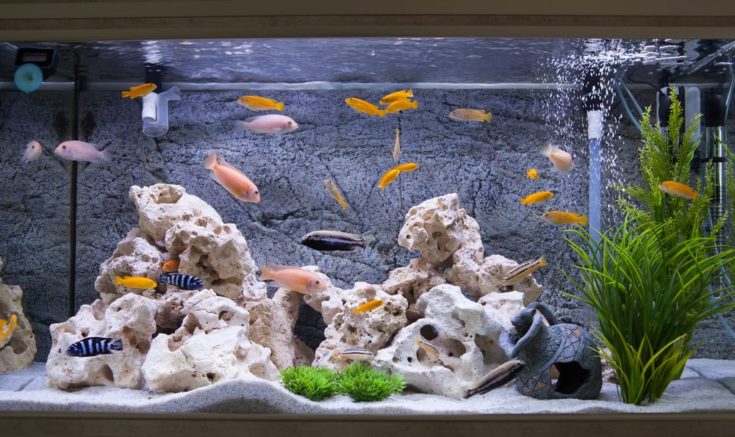
If your still not sure which light to choose:
- For the best overall coral reef LEDs you can’t go wrong with the Kessil.
- For small nano tanks, the Fluval is an ideal pick and it doesn’t even have to be mounted on your tank.
- For growing high-intensity SPS and LPS corals, consider investing in the Radion system.
